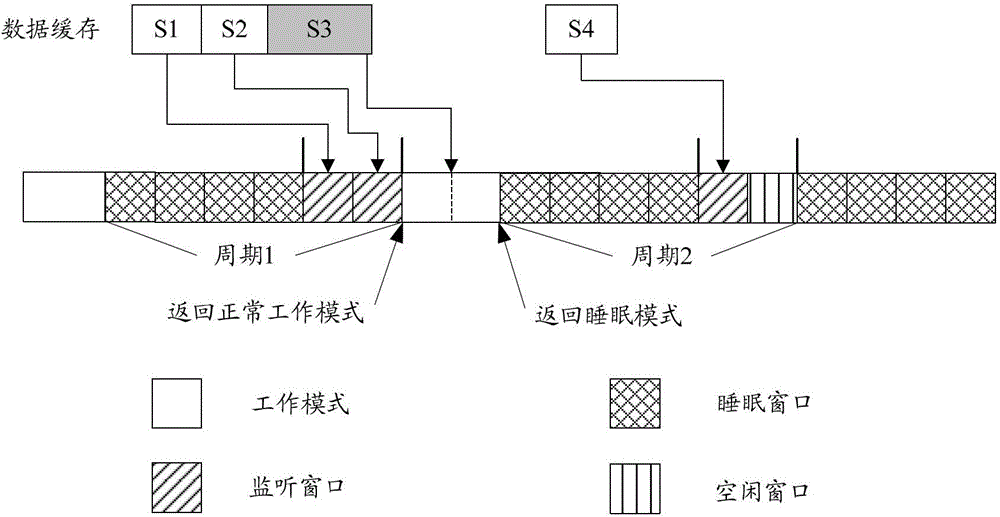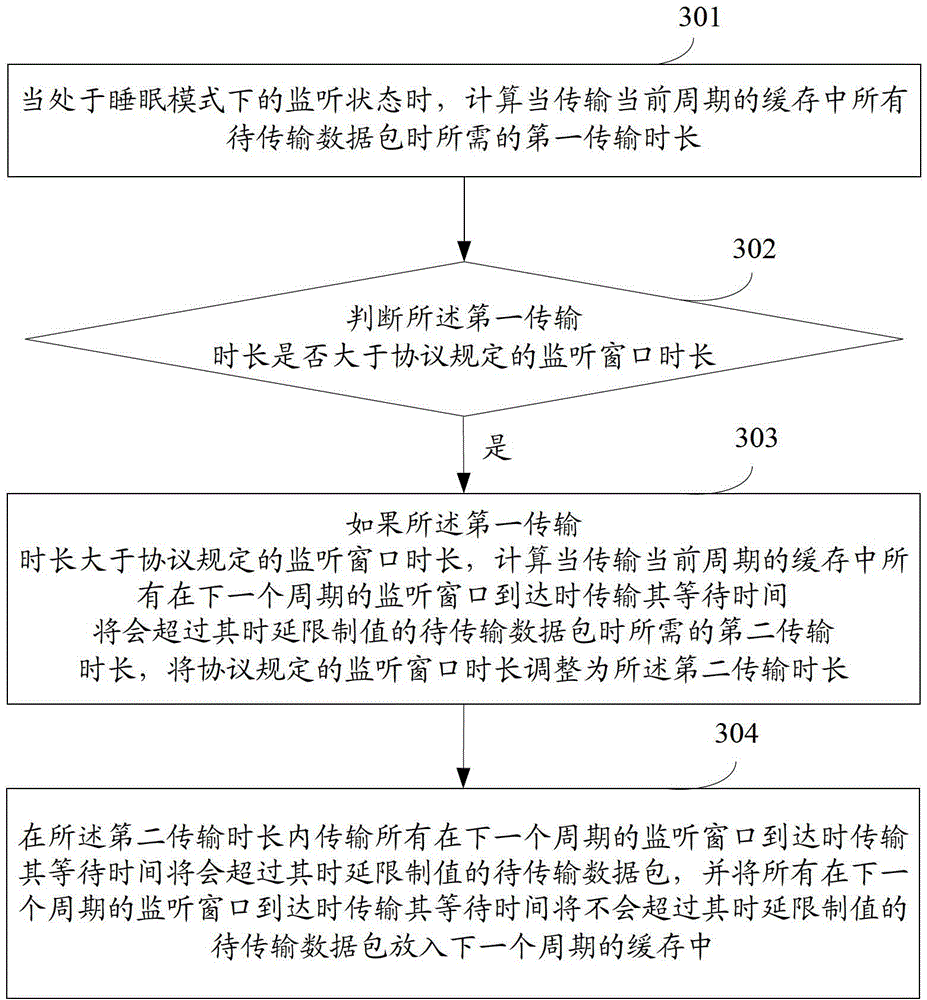Transmission scheduling method and device under sleeping mode
A technology of transmission scheduling and sleep mode, applied in the field of transmission scheduling in sleep mode, can solve the problems of reducing the energy saving efficiency of mobile terminals, appearing idle frames in monitoring windows, and losing data packets S3, so as to avoid data loss and reduce signaling overhead. , the effect of reducing power consumption
- Summary
- Abstract
- Description
- Claims
- Application Information
AI Technical Summary
Problems solved by technology
Method used
Image
Examples
Embodiment 1
[0030] see image 3 , which is a flowchart of a transmission scheduling method in sleep mode disclosed in Embodiment 1 of the present invention, the method includes the following steps:
[0031] Step 301: When in the listening state in the sleep mode, calculate the first transmission duration required when transmitting all the data packets to be transmitted in the cache of the current cycle;
[0032] For example, first, calculate the number of frames in the listening window required to transmit each data packet to be transmitted in the buffer of the current cycle:
[0033] T LKi = F ti R × D frame ( i ...
Embodiment 2
[0098] The difference between this embodiment and Embodiment 1 is that the case that the first transmission duration is less than or equal to the listening window duration specified in the protocol is further considered. see Figure 5 , which is a flow chart of another transmission scheduling method in sleep mode disclosed in Embodiment 2 of the present invention, including the following steps:
[0099] Step 301: When in the listening state in the sleep mode, calculate the first transmission duration required when transmitting all the data packets to be transmitted in the cache of the current cycle;
[0100] Step 302: judging whether the first transmission duration is greater than the listening window duration specified in the protocol;
[0101] Step 303: If the first transmission duration is longer than the listening window duration stipulated in the protocol, calculate all the transmissions to be transmitted whose waiting time will exceed the delay limit value when the list...
Embodiment 3
[0116] see Figure 6 , which is a flowchart of a method for transmitting data by a mobile terminal disclosed in Embodiment 3, including the following steps:
[0117] Step 601: the mobile terminal is in normal working mode;
[0118] Step 602: The mobile terminal judges the time t during which the data cache remains empty in the normal working mode F Does it reach the threshold T threshold , if yes, enter step 603, otherwise, return to step 601;
[0119] Step 603: the mobile terminal sends a request message requesting to enter the sleep mode to the base station;
[0120] Step 604: the mobile terminal enters the sleep mode after receiving the confirmation message of entering the sleep mode sent by the base station;
[0121] Among them, the confirmation message sent by the base station to the mobile terminal carries at least the initial parameter defined by the IEEE 802.16e standard: the duration of the sleep window T S , the duration of the monitoring window T L And the sta...
PUM
 Login to View More
Login to View More Abstract
Description
Claims
Application Information
 Login to View More
Login to View More - R&D
- Intellectual Property
- Life Sciences
- Materials
- Tech Scout
- Unparalleled Data Quality
- Higher Quality Content
- 60% Fewer Hallucinations
Browse by: Latest US Patents, China's latest patents, Technical Efficacy Thesaurus, Application Domain, Technology Topic, Popular Technical Reports.
© 2025 PatSnap. All rights reserved.Legal|Privacy policy|Modern Slavery Act Transparency Statement|Sitemap|About US| Contact US: help@patsnap.com



